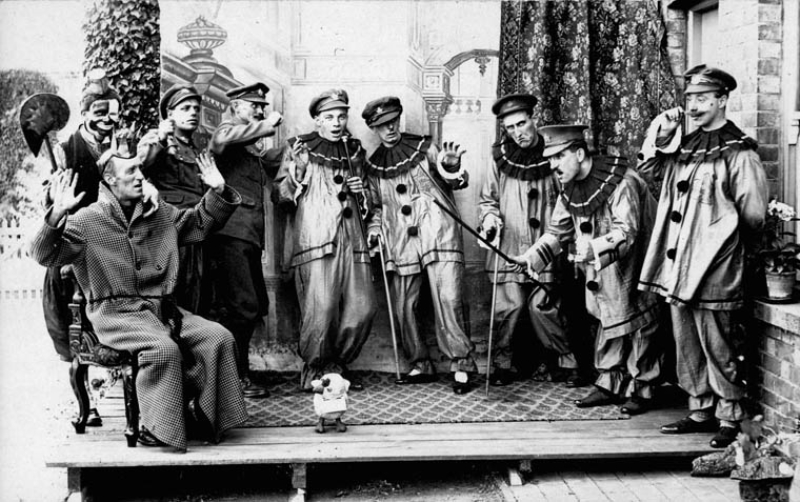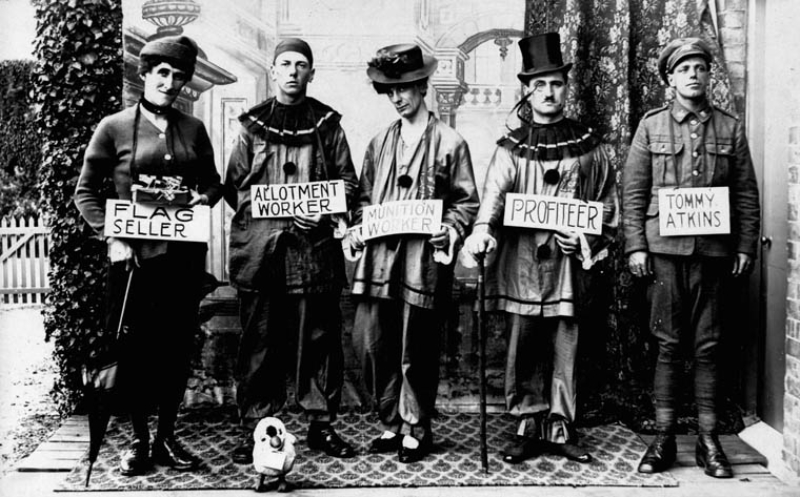



There was an unprecedented demand for timber during the First World War. It was estimated that every soldier needed the equivalent of five trees:
To try and meet this demand, the Home Grown Timber Committee was set up in the Board of Agriculture on 24 November 1915. Their brief was to increase the supply for military needs, and in April 1916 it was given the power to compulsory purchase standing timber. With a large proportion of the workforce called up to serve in the armed forces, Britain found itself short of manpower to fell and process the timber. A call for assistance was answered by the Dominion of Canada.
The Canadian Forestry Corps, a military unit of the Canadian Army, was set up in 1915 and arrived in Britain in 1916 under the command of Lieutenant-Colonel Alexander McDougall. In England, Scotland and Wales, there were seventy forestry operations run by the Canadian Forestry Corps and it supplied 70% of the Allied Timber until 1919.
The Canadian Forestry Corps was composed of companies, each of which came under one of the six district headquarters in Great Britain or one of the eight district headquarters in France.
Most companies were engaged in forestry operations (including the making of pit props, sleepers, saw logs and axe handles) but some cleared, drained, leveled and graded sites for aerodromes, both in England and France
No. 126 Company, Canadian Forestry Corps organised in August 1917 under the command of Captain A.B.R. Kenny was initially based at Ampthill near Sandy in Bedfordshire. As the timber operations in came to a close attention shifted to the Santon Downham Estate.
In April 1918 Major Kenny visited Downham Hall and compiled a report on the available timber. This must have been favorable as on 14th June a working party of Lieut. A.G.Head with 2 N.C.Os and seven men traveled by lorry from Sandy to Suffolk. This party were engaged first in assisting the men of the Labor Company in alterations to Downham Hall being carried out by the D.O.R.E. Thetford. A week later on the arrival of the Mill parts at Brandon station, this party, strengthened now by two teams, were engaged in transporting the mill parts from Brandon station.
During July the mill site next to the main line railway, and the route of the narrow gauge railway were cleared, the telephone was installed at Downham Hall and arrangements were made for a suitable water supply and to ensure that the bridge over the River Ouse was strengthened so as to carry the railway.
In August the administration officer complained of the difficulties in trying to manage the three operational sites (Ampthill, Sandy and Downham). Ampthill and Downham are 70 miles apart, and the train service at the time was reported as having poor connections.
The Headquarters of the Company were moved from Ampthill to Brandon on September 25th. Lieut. A.G.Read was in charge of the party which consisted of the Orderly Room Staff and Officers & Mess Cook and batmen. They were conveyed by road in two motor lorries with the company records, office furniture, Officers' Mess equipment, etc. On Sept. 26th O.S.M. Miller and eighteen Other Ranks proceeded by rail from Ampthill to Brandon, and Capt. Jory made the journey the same day by road from Ampthill to Downham Hall. Lieut. Girdlestone and twenty six Other Ranks were left to constitute the Ampthill detachment. Sgt. Darr was in charge of the shipping at that place. CQMS. Ford and Pte. Thomas remained to superintend the removal of the Company stores. Sgt. Goodwin and three Other Ranks were employed on repairing fences at Heydon Hill, On. Sept. 27th the distribution of the company as follows:- Headquarters, (Downham Hall) 3 Officers, 112 Other Ranks, Sandy Detachment 1 officer 47 Other Ranks; Ampthill Detachment, 1 officer and twenty five other Ranks.
During October a serious outbreak of Influenza was experienced at Downham Hall. One Officer, One Lady Driver and twenty-six men were affected. Dr. Trotter from Brandon visited the Camp daily and the patients were attended by Sgt. Poole. The serious cases were sent to the Military Hospital, Thetford. These numbered sixteen, while there were twelve cases treated in the Camp Hospital. One man, Pte. Avard. Dimock died in Thetford Military Hospital on 31st October, of pneumonia following on from influenza. Private Dimmock had married whilst at Ampthill only four months earlier. He was buried in Ampthill Churchyard on November 4th following a military funeral.
Seventy Prisoners of War from Warren Wood Camp were engaged in assisting with the erection of a Prisoners of War Compound for two hundred POW. The huts were erected, and the barbed wire entanglements placed in position under the direction of Officer Commanding (Major Kenny) and with the assistance of a Sergeant and twenty Other Ranks from an Imperial Labor Company. This work was completed by November 1st. The Prisoners of War were expected to arrive to occupy the compound, about Nov. 14th.
During November 1918 the light railway started operation, moving logs to the sawmill on log cars constructed by personnel of the Company that were hauled by a locomotive.
From December, German Prisoners of War were employed in felling and sawing operations.
The siding connection to the main line was completed in February 1919, allowing the first shipments of timber to be made - even if a little late for the war effort.
The official Canadian presence was wound up in March 1919 and the timber operation, with mill and railway were sold to the Downham Syndicate.
One facility for the men at Downham Hall was the YMCA. An Armstrong hut had been constructed to act as a canteen and a large marquee provided as a recreation room, with reading and writing materials. As the winter progressed, the marquee proved unsuitable and arrangements seem to have been made to use part of Downham Hall. In December 1918 a number of concert parties took place. Dancing parties were organized and were reportedly very successful. A 'splendid' Christmas fare was provided for all ranks. The Mess Halls were suitably decorated for the festivities and a seasonable bill of tare provided. Turkey, Christmas pudding apples, (from Canada) nuts, cigarettes etc., all found a place on the boards and the men did full justice to the feast. A Christmas parcel was provided for each N.C.O and Man, and the men in hospital were remembered and provided for.
The YMCA had a resident concert party 'The Woodpeckers'. Two pictures of the troupe have come to light:


We are fortunate that reports and correspondence from the 126 Company have survived and are curated by Library and Archives Canada in Ottawa. Selected reports can be read here and selected correspondence here.